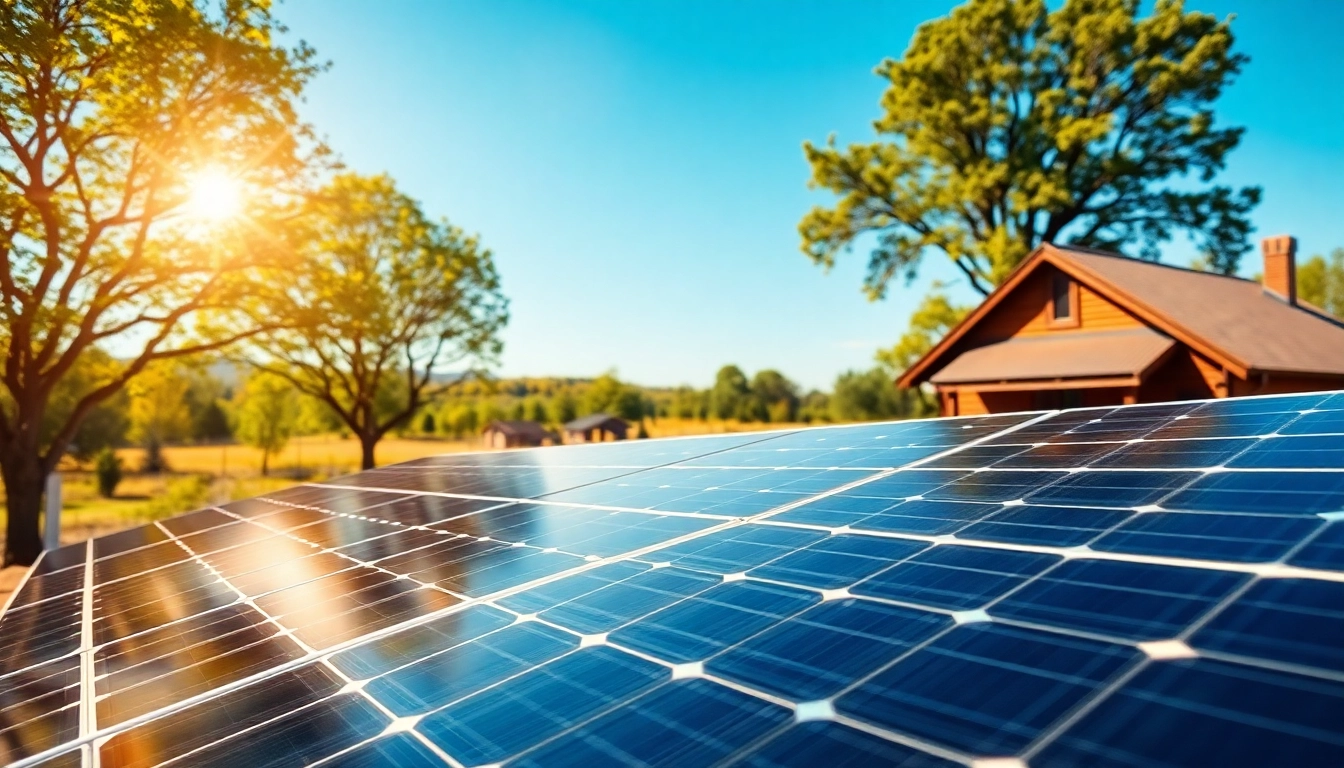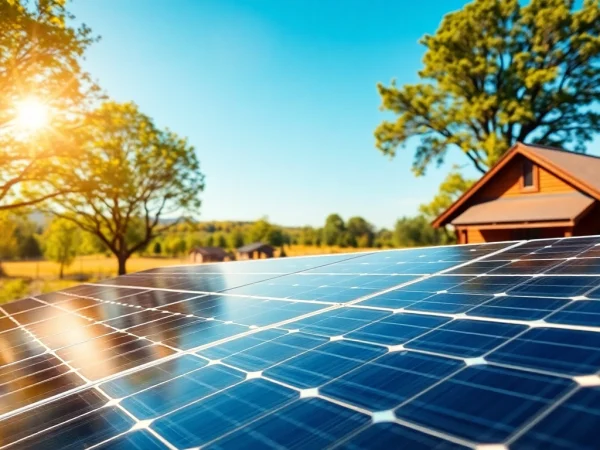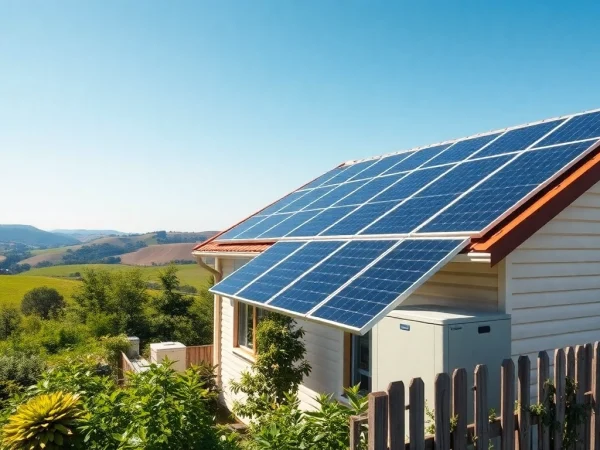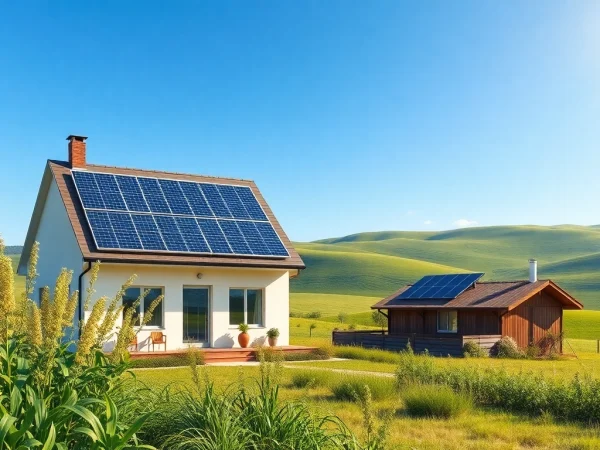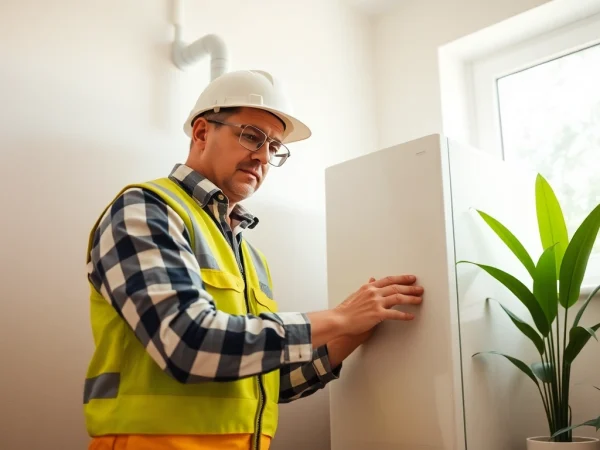Unlocking the Potential of Your Off Grid Home Solar System: A Comprehensive Guide
Understanding Off Grid Home Solar Systems
What Is an Off Grid Home Solar System?
An off grid home solar system is a setup that allows homeowners to generate and utilize their own electricity without relying on the traditional grid. Unlike grid-tied systems that connect to a utility company and rely on external power sources for reliability, off grid systems are completely independent. This independence is a key draw for many people who are looking to minimize their environmental impact, save on energy costs, or live in remote areas where utility service is unavailable.
In essence, off grid home solar systems harness solar energy through solar panels, converting sunlight into electricity that can be stored in batteries for use at night or during cloudy weather. An important aspect of these systems is their ability to provide complete energy autonomy. If you’re considering a move to sustainable living, understanding how an off grid home solar system works is crucial to making an informed decision about your energy source.
Key Components of Off Grid Systems
The operation of an off grid solar system relies on several essential components, all of which work together to ensure that energy needs are met efficiently. The primary elements include:
- Solar Panels: The most visible component, these panels capture sunlight and convert it into electricity. The number of panels required depends on your energy consumption and the available sunlight in your area.
- Inverter: This device converts the direct current (DC) electricity generated by the solar panels into alternating current (AC) electricity, which powers most home appliances.
- Batteries: These are crucial for storing energy generated during sunny days for use during nighttime or periods of low sunlight. Battery capacity and lifespan are key considerations.
- Charge Controller: This component regulates the voltage and current coming from the solar panels to prevent overcharging the batteries, extending their lifespan.
- Backup Generator (optional): In some systems, homeowners choose to install a generator as a backup to ensure they have power during extended periods of low solar output.
Benefits of Going Off Grid
Transitioning to an off grid solar system comes with multiple benefits, making it a desirable option for many homeowners:
- Energy Independence: By generating your own electricity, you are less reliant on utility companies and less affected by rising electricity prices or outages.
- Environmental Impact: Off grid systems often utilize sustainable energy sources, reducing your carbon footprint and reliance on fossil fuels.
- Cost Savings: Although the initial investment can be high, off grid systems can lead to significant savings over time through reduced energy bills and government incentives.
- Resilience: These systems are robust in remote areas and provide a reliable power source even in emergencies or natural disasters.
- Self-Sufficiency: Living off the grid fosters a sense of independence and connects homeowners with their energy consumption and environmental responsibility.
Choosing the Right Off Grid Solar Kit
Factors to Consider When Selecting Your Kit
Selecting the right off grid solar kit is crucial to ensure that your energy needs are met. Here are some critical factors to consider:
- Energy Needs: Calculate your daily energy consumption. This will help in determining the size of the system necessary to support your home.
- Climate: Consider the average sunlight hours your location receives throughout the year. This can significantly affect the performance of your solar system.
- Budget: Determine your budget for both upfront costs and ongoing maintenance. Off grid systems can vary significantly in price.
- Quality of Components: Investing in high-quality panels, inverters, and batteries will ensure better performance and longevity.
- Local Regulations: Familiarize yourself with any local laws regarding solar installation and energy generation, as they can impact your choices.
Comparing Different Kits on the Market
The market offers various off grid solar kits, each designed for specific energy needs and budgets. Here are some tips for comparing them effectively:
- Power Output: Review the power output of the solar panels and ensure that it matches or exceeds your energy requirements.
- Battery Storage: Look into the number and type of batteries included in the kit. Lithium-ion batteries, for example, are more efficient but often come at a higher price.
- Inverter Capacity: Ensure the inverter can handle your peak energy loads. Oversized inverters may lead to higher costs without added benefit.
- Warranty and Support: Check the warranty terms and the availability of customer support. Good support can be invaluable during installation and maintenance.
FAQs About Off Grid Solar Kits
Here are some frequently asked questions about off grid solar kits that often come up for prospective buyers:
- Can I install an off grid solar system myself? Yes, many kits are designed for DIY installation, but hiring a professional might be beneficial for complicated systems.
- How much maintenance is required? Regular maintenance is minimal, mainly ensuring panels are clean and batteries are functioning properly.
- What happens during cloudy weather or winter? Battery storage allows you to utilize energy even on cloudy days. It’s essential to size your system appropriately for seasonal variations.
Installing Your Off Grid Home Solar System
Steps for a Successful Installation
Once you’ve selected the right solar kit, the installation process can begin. Here’s a step-by-step guide to a successful installation:
- Inspect and Prepare the Site: Ensure that the installation area receives sufficient sunlight and is accessible for installation.
- Mount the Solar Panels: Secure the mounting brackets and panels, taking care to position them to optimize sunlight exposure.
- Install the Inverter: Connect the inverter close to the battery bank and solar panels to minimize energy loss.
- Connect the Batteries: Set up your battery bank according to the manufacturer’s instructions, ensuring that all connections are secure and insulated.
- Set Up the Charge Controller: This component will require configuration, which typically involves setting it to the proper battery type and size.
- Final Connections: Connect all components, ensuring proper wiring practices are followed to prevent shorts or other electrical issues.
- Test the System: Turn on the system and monitor performance to ensure that all components are functioning correctly.
Common Installation Mistakes to Avoid
While installing an off grid solar system is rewarding, it requires attention to detail. Here are common mistakes to avoid:
- Ignoring Local Regulations: Ensure compliance with local codes and permits to avoid fines or complications.
- Improper Panel Orientation: Panels must be positioned to capture the most sunlight; failing to do so can drastically reduce efficiency.
- Overloading the Inverter: Ensuring that appliances used do not exceed the inverter’s capacity is crucial to preventing breakdowns.
- Neglecting Maintenance: Failing to perform routine checks on batteries and connections can lead to system failures.
Hiring Professionals or DIY?
Determining whether to hire professionals or undertake a DIY installation depends on multiple factors, including your technical skills, the system’s complexity, and local regulations. Here are some pros and cons:
- DIY Installation:
- Cost savings on labor
- Personal satisfaction and learning experience
- Flexibility in working at your own pace
- Hiring Professionals:
- Expert installation with knowledge of local codes
- Guaranteed performance from knowledgeable technicians
- Reduced risk of installation errors
Maximizing Efficiency and Performance
Maintenance Tips for Longevity
To ensure your off grid solar system operates at peak performance, regular maintenance is essential. Here are some practical tips:
- Clean the Solar Panels: Dust, mud, and debris can hinder performance, so cleaning panels every few months is recommended.
- Check Connections: Regularly inspect wires and connectors for signs of wear or corrosion and tighten them as necessary.
- Monitor Battery Health: Perform regular checks on battery levels and health indicators to avoid unexpected failures.
- Review System Performance: Use monitoring tools to track energy generation and consumption, helping identify any performance issues.
Monitoring Your Solar System Performance
Monitoring your solar system enables you to optimize performance and ensure your energy needs are met. Several methods can assist:
- Smart Monitoring Tools: Many systems come with software or applications that provide real-time data about energy production and usage.
- Regular Manual Checks: Periodically compare actual usage against estimates to determine if adjustments are necessary.
Improving Energy Efficiency in Off Grid Living
To maximize the benefits of your off grid solar system, focus on improving energy efficiency within your home. Here are practical strategies:
- Energy-Efficient Appliances: Opt for Energy Star-rated appliances that consume less power.
- LED Lighting: Replace incandescent bulbs with LED lights, which use significantly less energy.
- Insulation: Improve your home’s insulation to reduce heating and cooling demands, leading to less energy consumption overall.
- Water Conservation: Use low-flow fixtures and energy-efficient water heaters to lower energy usage.
Real-Life Experiences with Off Grid Systems
Success Stories from Off Grid Homeowners
Many homeowners have successfully transitioned to off grid living, providing inspiration for others considering this lifestyle change. Here are compelling success stories:
- The Smith Family: After installing a 5 kW off grid solar system, the Smiths report no longer needing to pay monthly utility bills and enjoying the flexibility of being energy independent.
- Jane Doe: Living solo in a rural area, Jane used a combination of solar and wind power, showcasing the potential hybrid approach to enhance reliability.
Challenges Faced in Off Grid Living
While off grid living has numerous benefits, it’s not without challenges. Some common issues include:
- Initial Costs: The upfront investment can be substantial, posing a barrier for some families.
- Energy Management: Learning to manage energy consumption based on available solar resources requires a mindset shift.
- Maintenance Needs: Regular maintenance is necessary to keep systems running smoothly, demanding time and sometimes money.
Future of Off Grid Solar Technology
The future of off grid solar technology looks promising. With advancements in photovoltaic efficiency, battery technology, and energy management systems, homeowners can expect:
- Higher Efficiency Panels: New solar panel technologies aim for higher efficiency rates, allowing homeowners to generate more energy from fewer panels.
- Smart Battery Systems: Innovations in battery technologies will lead to longer-lasting, high-capacity batteries that enhance energy storage capabilities.
- Integration with Smart Home Tech: More systems will incorporate IoT for enhanced monitoring and automation, optimizing energy use and cutting costs.
